Join Our Line Dancing Class at Wimbledon School of Freestyle and Ballroom!
Line dance/Line dancing classes at Classes at St Luke’s Church Hall, Strathmore Road, Wimbledon Park, SW19 8DA. Classes are currently running, £10 per session, drop in basis, just come along. More details paulsandwell@yahoo.co.uk or text me on 07355 706 244
Looking for a fun and energetic way to stay active? Come join our Line Dancing Class every Wednesday evening from 7:00 PM to 8:00 PM at St Luke’s Church Hall, Strathmore Road, Wimbledon Park, SW19 8DB or book a private lesson in your home. Gift vouchers also available so treat someone else for Xmas, Birthday etc. Group private lessons can also be booked weekly for corporations, clubs, etc where we come to your location.
Our classes are perfect for all ages and skill levels, whether you’re a complete beginner or have some dance experience. You’ll enjoy a diverse range of music genres, from country and western to rock ‘n’ roll and even Irish tunes. Our friendly and experienced instructors will guide you through the steps, ensuring you have a great time while learning new moves.
Why Join Us?
- Fun and Friendly Atmosphere: Meet new people and make friends in a welcoming environment.
- Great Exercise: Line dancing is a fantastic way to stay fit and healthy.
- Diverse Music: Dance to a mix of genres that keep things exciting and fresh.
- Experienced Instructor: Learn from the best and improve your dancing skills.
Don’t miss out on the joy of line dancing! Grab your dancing shoes and join us for an hour of fun, fitness, and fantastic music. See you on the dance floor! For more information, visit our website or contact us directly. Let’s Wimbledon Line Dance or Latin Line Dance!
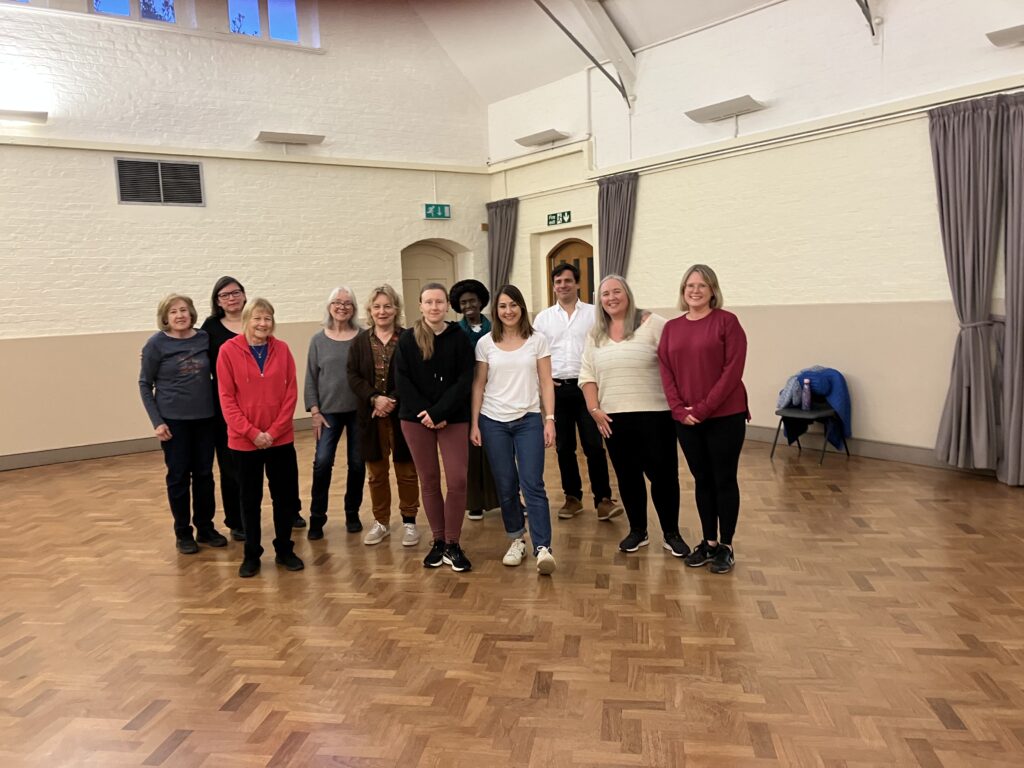
Wednesday. This class is from 7.00-8.00 pm in the large hall. Weekly, drop in and £12 per class. Please contact for more details. Open as normal unless otherwise stated here.
Thursday. Latin line dancing. 19.00-20.00 in the large hall. Learn rhythms like Mambo, Bosa Nova, Cha Cha, Samba, Rumba, Cumbia etc.
Private lessons available. For more information on Line Dance group classes, private lessons: Email paulsandwell@yahoo.co.uk.
Text me on: 07355 706244
The origins of line dancing are debatable but what is certain is that it is a mix of many styles brought to the USA by various waves of immigration. From the square dances and circle dances of old Europe, new dance styles developed in America including line dance. Line dance classes sooon appeared throughout the world and line dancing became a major form of dance. For many years it was solely Country and Western music that was the main inspiration for the dancing but now other types of music can also be used to supplement this. This Wimbledon line dance class will teach you some of these styles in an environment where you can have fun. Book a private group class in other areas like Morden, Mitcham, New Malden, Putney, Tooting. We can come to you on a one off or weekly basis.
Learn new steps at my Wimbledon line dance classes like applejacks, monterey turns, tush, hitch, military turns, pivot turns and others. Gradually learn more and more dances at this SW19 line dance class school at Wimbledon.
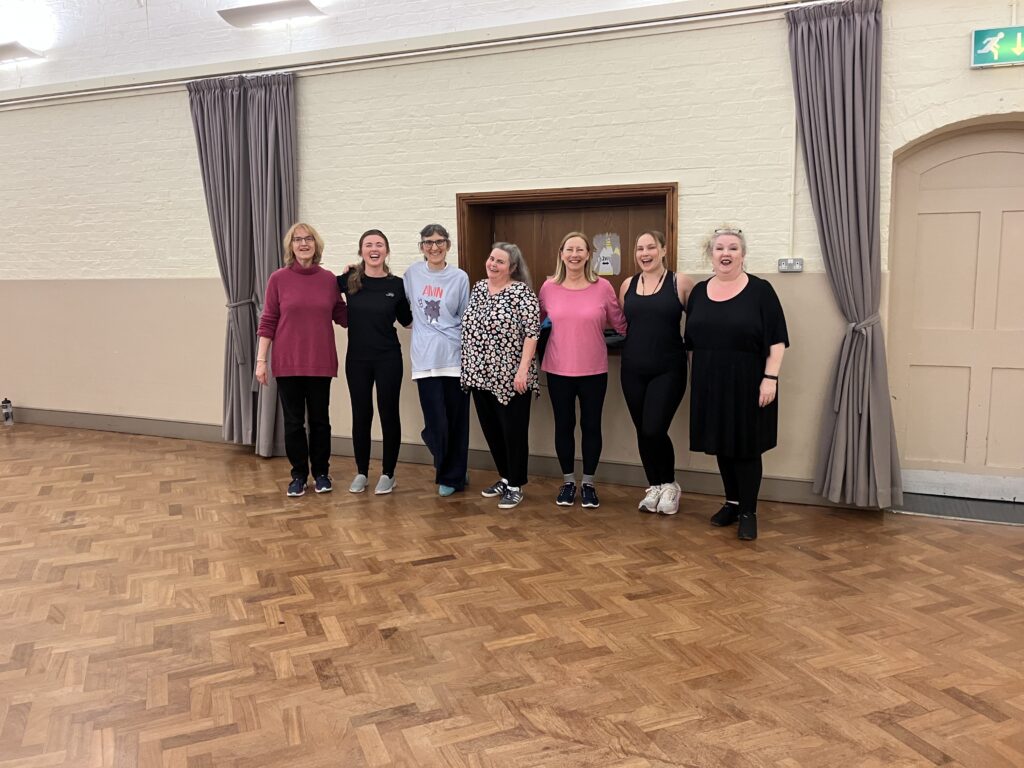
The location of my South London line dance class / line dance classes is close to Tooting, Colliers Wood, Morden, New Malden, Mitcham, Southfields, Earlsfield and Putney. Why not come and try some new steps in a fun line dance class. The 57 bus serves Colliers Wood, Tooting, New Malden. The 93 bus Morden and Putney including Putney Hill. Bus Route 493 serves Richmond, Roehampton, Southfields, Tibbet’s Corner, Blackshaw Road; 131 Bus route Kingston, Norbiton, New Malden, Colliers Wood, Merton Abbey; 200 Bus route from Mitcham and Mitcham Green to Colliers Wood, Merton Abbey, Wimbledon Village, Raynes Park; 156 bus route Southfields Community Centre, Clapham Junction; Wandsworth and South Side Centre; 163 bus route from Morden via Raynes Park. The District Line allows access to classes from Earlsfield, Southfields and Putney. The Northern Line from Morden, Tooting, Colliers Wood and Balham. Tramlink from Croydon. National Rail from Wandsworth Bridge, Earlsfield, Raynes Park, New Malden, Motspur Park, South Merton, Bushey, Hampton Court, Berrylands. SW19, SW20, SW18, SW17, SW16, SW15, SW14.
Wednesday night line dance classes will be held in St Luke’s Hall Wimbledon Park which is very close to North Earlsfield and Southfields. It is one stop on the District line from Southfields Station and is within walking distance from both Southfields and Earlsfield. Morden line dance class.
Roehampton line dance class. Some people think that dancing in lines originated from the film Saturday Night Fever. Earlsfield line dance class. Line dancing is essentially dancing in lines to a routine choreographed to a set piece of music, perhaps changing walls and often with a bridge and tag in certain places to accomodate irregular sections of the music.
Bushey Mead line dance class. Garratt Lane line dance class. Latin line dance class – dance solo to rhythms such as cha cha cha, rumba, samba etc.
Line dancing is a captivating and energetic form of dance that has evolved over centuries, blending various cultural influences into a unique and widely enjoyed activity. Let’s dive into its rich history, the story behind its development, and some of the popular dances that have emerged over the years.
History of Line Dancing
The origins of line dancing are somewhat murky, with influences tracing back to European folk dances brought to North America by immigrants in the 1800’s. These early dances, characterized by their structured steps and communal nature, laid the groundwork for what would eventually become line dancing. As settlers spread across the American frontier, they brought their dances with them, which evolved into the country-western styles we recognize today and further into multiple rhythm types throughout the world as line dancing evolved into its modern form.
In the 1950s, line dancing began to take on a more defined form. One of the earliest recognized line dancers was the Madison, which gained popularity in the late 1950s and early 1960s. . The 1970s further propelled line dancing into the mainstream as many new dances were choreographed to popular disco songs. This period saw the creation of iconic dances like the “Electric Slide,” which remains a staple at social gatherings.
The Story of Line Dancing’s Evolution
Line dancing’s journey from folk traditions to a global phenomenon is a testament to its adaptability and universal appeal. In the 1970s, the rise of country music and the disco craze brought line dancing to a broader audience. The simplicity and social nature of line dancing made it accessible to people of all ages and backgrounds, creating a sense of community and fun.
The 1990’s marked a significant milestone with the release of Billy Ray Cyrus’s “Achey Breaky Heart”, which sparked a renewed interest in line dancing. This song, along with others like “Boot Scootin’ Boogie” by Brooks & Dunn, helped cement line dancing’s place in popular culture. The dance format began to spread beyond country music, incorporating elements from Pop, Latin and other genres.
Popular Line Dances
Over the years, numerous line dances have become popular, each with its own unique steps and rhythms. Here are a few notable examples:
- The Electric Slide: Choreographed in 1976 by Ric Silver, this line dance is performed to the song “Electric Boogie” by Marcia Griffiths. It’s known for its smooth, sliding steps and is a favourite at weddings and parties.
- The Macarena: This dance, associated with the 1993 hit song by Los Del Rio, became a global sensation. Its simple, repetitive steps make it easy for anyone to join in and have fun.
- Boot Scootin’ Boogie: Popularized by Brooks & Dunn’s 1991 song, this line dance is a staple in country-western dance halls. It features a mix of shuffles, kicks and turns that embody the spirit of country music.
- Cupid Shuffle: Released in 2007 by Cupid, this line dance has a catchy beat and straighforward steps, making it a hit at social gatherings and fitness classes.
Today, line dancing continues to thrive, with enthusiasts around the world participating in classes, social events, and competitions. Modern line dancing has expanded to include a variety of music genres from pop and hip hop, to Latin and jazz. Dance clubs and fitness centres often incorporate line dancing into their programs, highlighting its benefits for physical health and social interaction.
Whether you’re a seasoned line dancer or a newcomer, line dancing offers a fun and engaging way to connect with others and enjoy the rhythm of the music. Its rich history and diverse influences make it a fascinating and ever-evolving art form.
At Wimbledon School of Freestyle, Ballroom and Fitness we welcome line dancing pupils from all over London. Our pupils come from places like New Malden line dance class, Morden, Old Morden, Roehampton, Richmond, Putney, Putney East, Putney Bridge, Oval, Stockwell, Clapham, Clapham Common, Clapham Park, Clapham Junction, Balham, Wandsworth, Wandsworth Bridge, Southfields, Earlsfield, Summerstown, Raynes Park line dance class, Mitcham, Streatham, Streatham Common, Streatham Hill, Merton, Merton Park, West Barnes, Kingston, Croydon, Brixton, Dulwich, Tooting, Tooting Broadway, Battersea, Tooting Bec, Fulham, Fulham Broadway, Parsons Green, Camberwell, Peckham, Norbury, Brockwell, Chelsea, Barons Court.
These steps form the foundation of many line dances. Enjoy practicing them! Are you planning to join a line dance class or event? Wimbledon School of Freestyle, Ballroom and Fitness is the dancing school for you and is very close to Southfields Earlsfield, Putney, Wandsworth and other London and South London locations. We are a premier London line dancing school and also specialise in Latin line dance classes. Line dancing to Country and Western music and other music genres. We can be easily reached from Putney, Fulham, Clapham, Battersea, New Malden, Morden, Richmond, Twickenham, Wandsworth, Surbiton, Berrylands, Mitcham, Streatham, Norbiton, Kingston-on-Thames.
Line dancing has a rich and varied history, with roots that can be traced back to several different cultures and time periods.
Early Origins
Some experts believe that variations of line dancing have existed for over 2,000 years, with evidence found in ancient Egyptian, Native American and European folk dance traditions. These early forms of line dancing were often part of social and ceremonial events.
19th Century
In the 1800s, European immigrants brought various dance styles to North America, which influenced the development of line dancing. Folk dances from countries like Ireland and Germany contributed steps and terminology that are still used in modern line dancing.
1950s-1970s
One of the first true line dances was the Madison created in 1957 in Columbus, Ohio. The 1960s saw the emergence of dance like the “San Francisco Stomp”.
1980s-1990s
The 1980s and 1990s were pivotal for line dancing, especially with the rise of country music. This period also saw the creation of many popular line dances that are still performed today.
Modern Line Dancing
Line Dancing Today
Today, line dancing is a global phenomenon, enjoyed in various settings from country-western bars to social clubs and dance studios.
Line dancing continues to be a popular and inclusive form of dance, bringing people together to enjoy music and movement. Are you interested in learning more about specific line dances or perhaps joining a class?
Line dancing is enjoyed by a diverse group of people from various backgrounds and age groups. Here are some key demographics and characteristics of those who participate in line dancing:
Age Range
- Children and Teens: Many schools and youth programs include line dancing as part of their physical education curriculum.
- Adults: Line dancing is popular among adults of all ages, often as a social activity or a form of exercise.
- Seniors: It’s especially popular among seniors due to its low-impact nature and the social interaction it provides.
Looking for a fun and energetic way to stay active? Come join our Line Dancing Class every Wednesday evening from 7:00 PM to 8:00 PM at St Luke’s Church Hall, Strathmore Road, Wimbledon Park, SW19 8DB.
Backgrounds
- Country Music Fans: Line dancing has strong ties to country music, attracting fans of this genre.
- Dance Enthusiasts: People who enjoy various forms of dance often participate in line dancing for its structured yet fun routines.
- Fitness Seekers: Many people take up line dancing as a way to stay active and fit, as it provides a good cardiovascular workout.
Social Aspects
- Community Groups: Line dancing is a popular activity in community centres, social clubs, and dance halls.
- Event Participants: It’s often featured at weddings, parties, and other social gatherings, making it a fun group activity.
- Competitive Dancers: Some people participate in line dancing competitions, showcasing their skills and creativity.
Geographic Spread
- Global Appeal: While it has strong roots in the United States, line dancing is popular worldwide including Europe, Asia and Australia.
Inclusivity
- All Skill Levels: Line dancing is accessible to beginners and experienced dancers alike, with routines ranging from simple to complex.
- Adaptable: It can be adapted for people with different physical abilities, making it an inclusive activity.
Line dancing brings together people from all walks of life, creating a sense of community and shared enjoyment. Are you thinking about joining a line dance group or just curious about the people who participate?
Our classes are perfect for all ages and skill levels, whether you’re a complete beginner or have some dance experience. You’ll enjoy a diverse range of music genres, from country and western to rock ‘n’ roll and even Irish tunes. Our friendly and experienced instructors will guide you through the steps, ensuring you have a great time while learning new moves.
Why Join Us?
- Fun and Friendly Atmosphere: Meet new people and make friends in a welcoming environment.
- Great Exercise: Line dancing is a fantastic way to stay fit and healthy.
- Diverse Music: Dance to a mix of genres that keep things exciting and fresh.
- Experienced Instructors: Learn from the best and improve your dancing skills.
Don’t miss out on the joy of line dancing! Grab your dancing shoes and join us for an hour of fun, fitness, and fantastic music. See you on the dance floor! Line dancing courses, learning workshops course. Country and Western line dancing and more line dance rhythms. Morden, Mitcham line dance classes, private lessons, private group lessons Putney, line dancing, Wandsworth, Norbiton, New Malden visiting you in your home lessons.
For more information, visit Wimbledon School of Freestyle and Ballroom or contact us directly. Let’s line dance and Latin line dance!
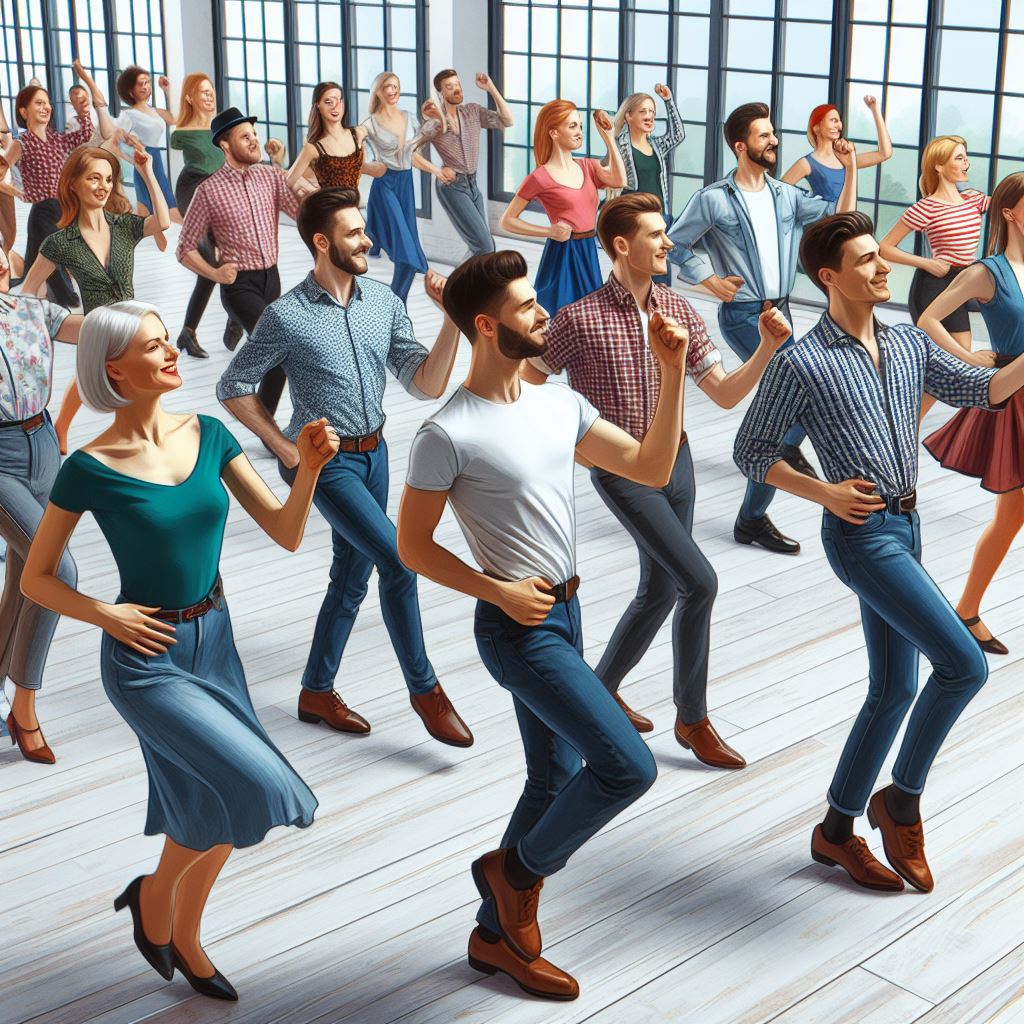


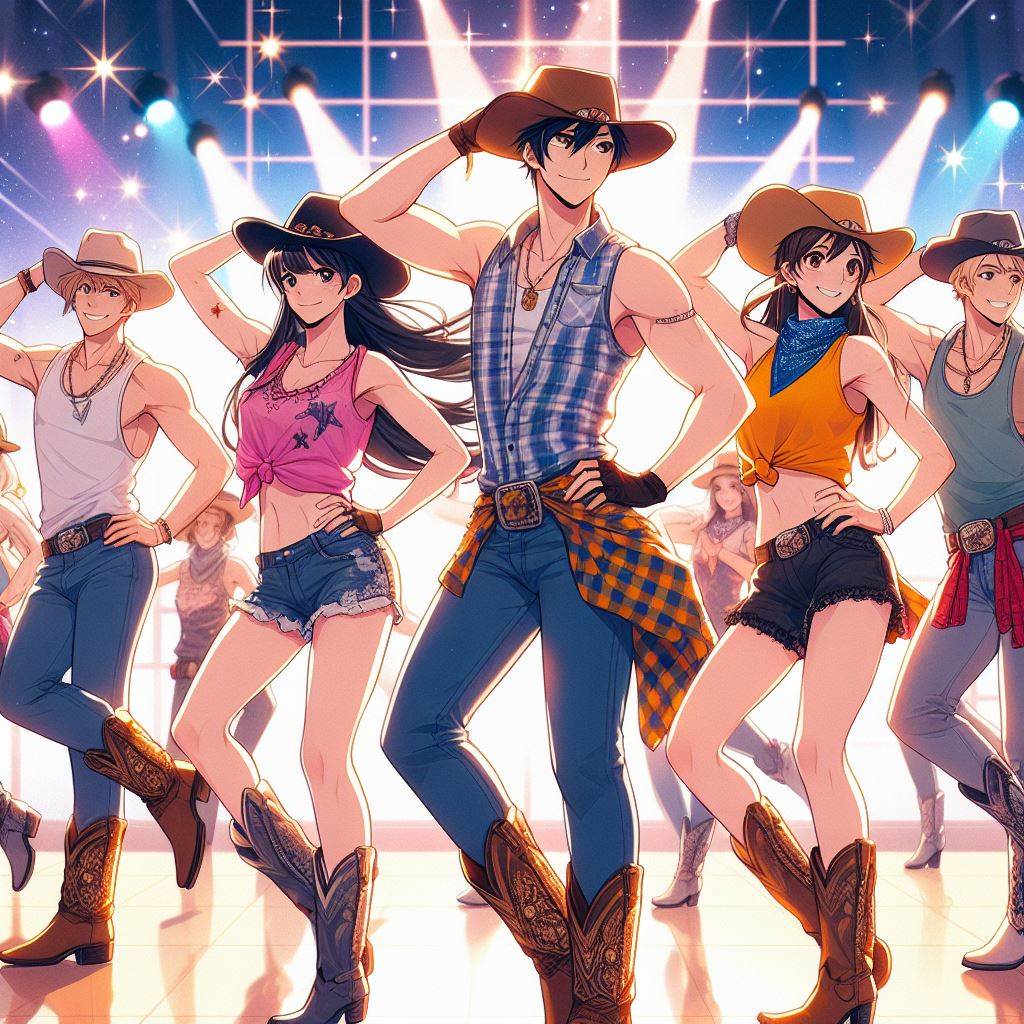
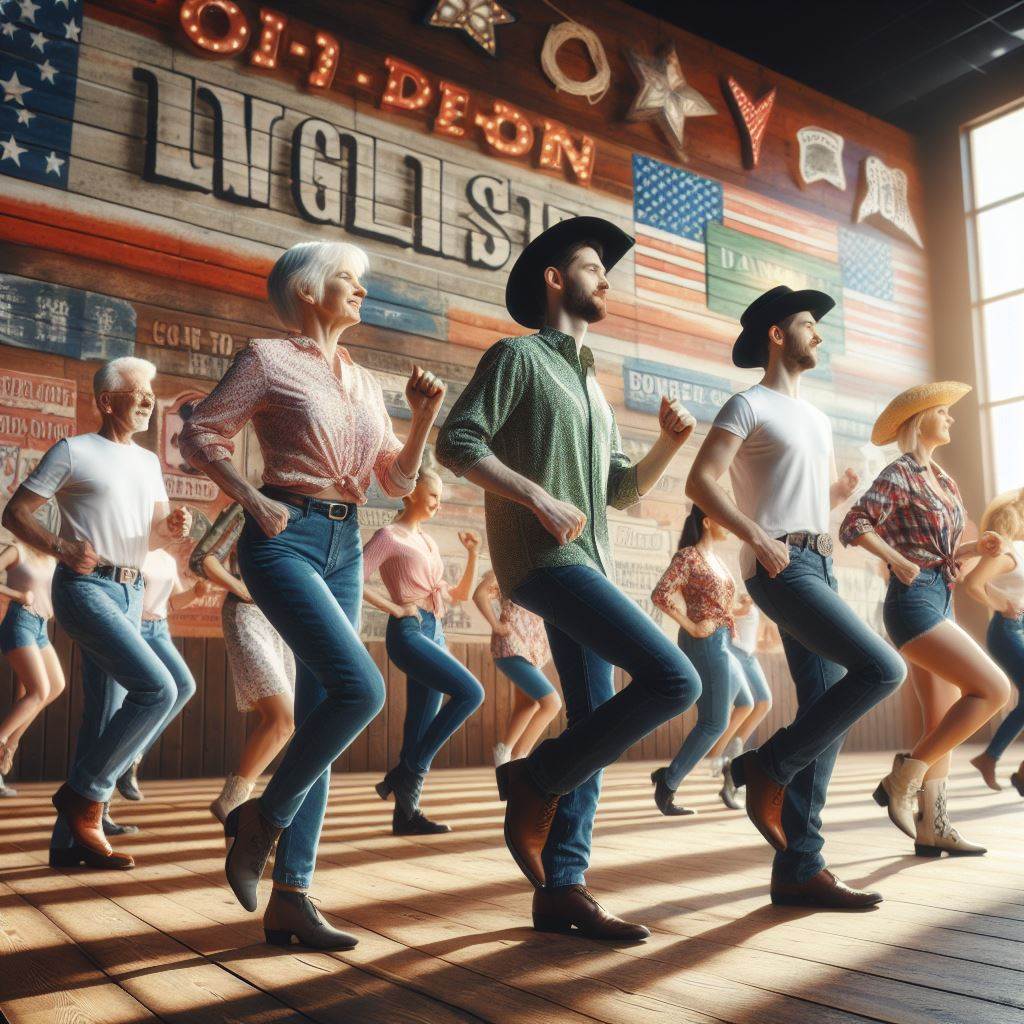

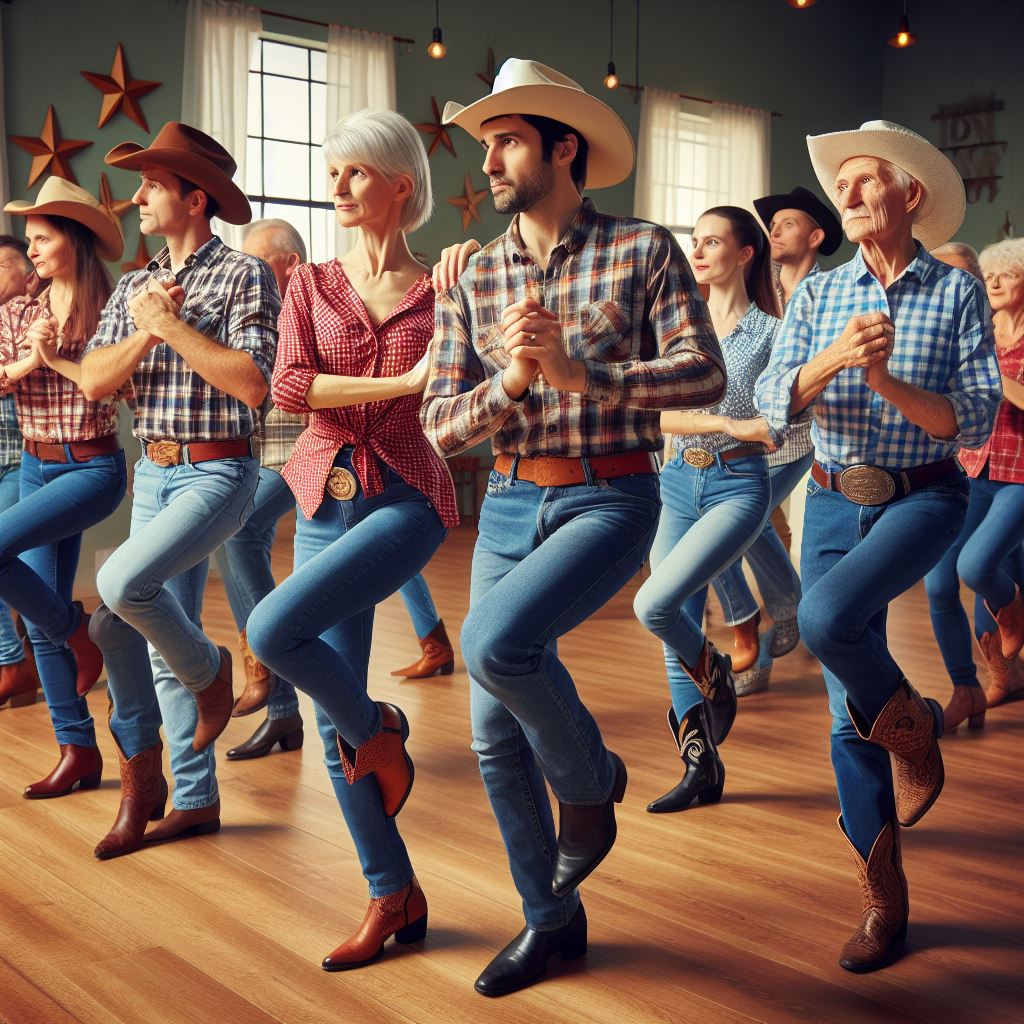
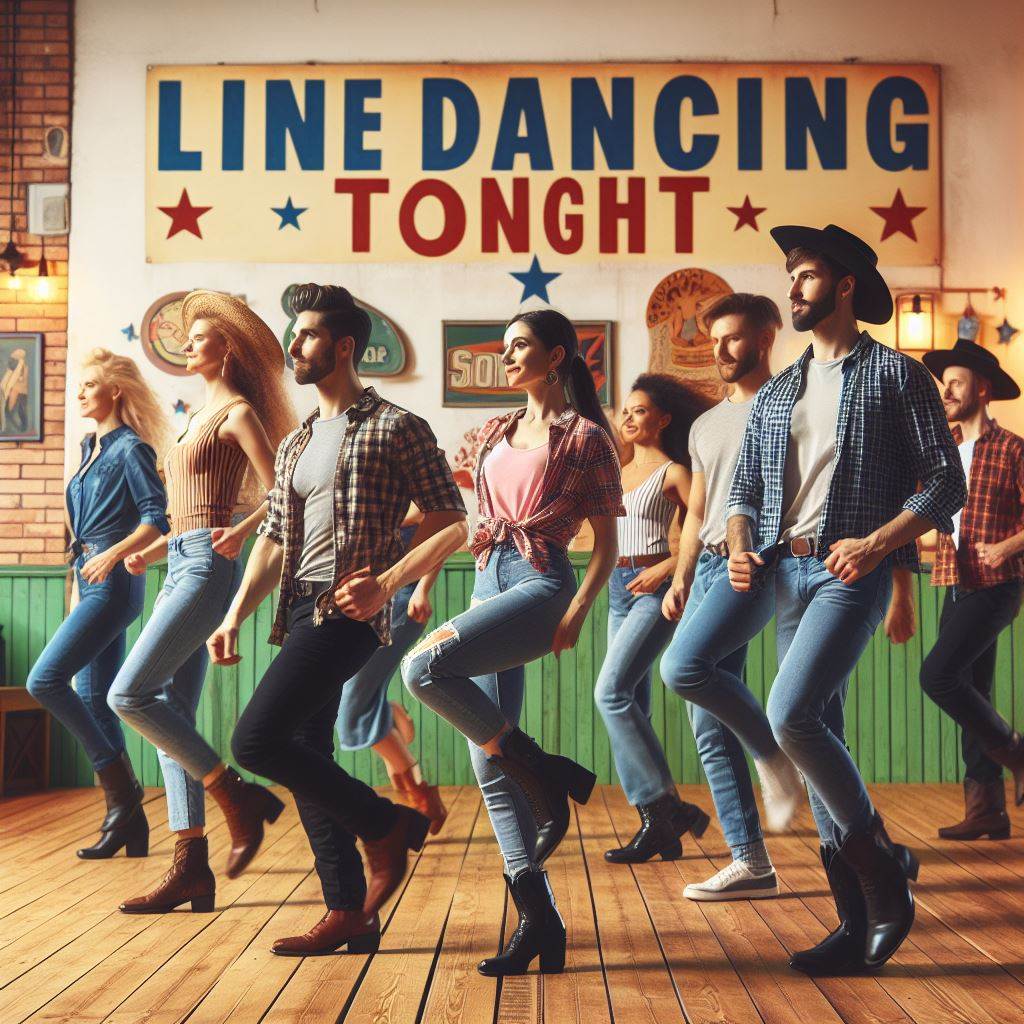
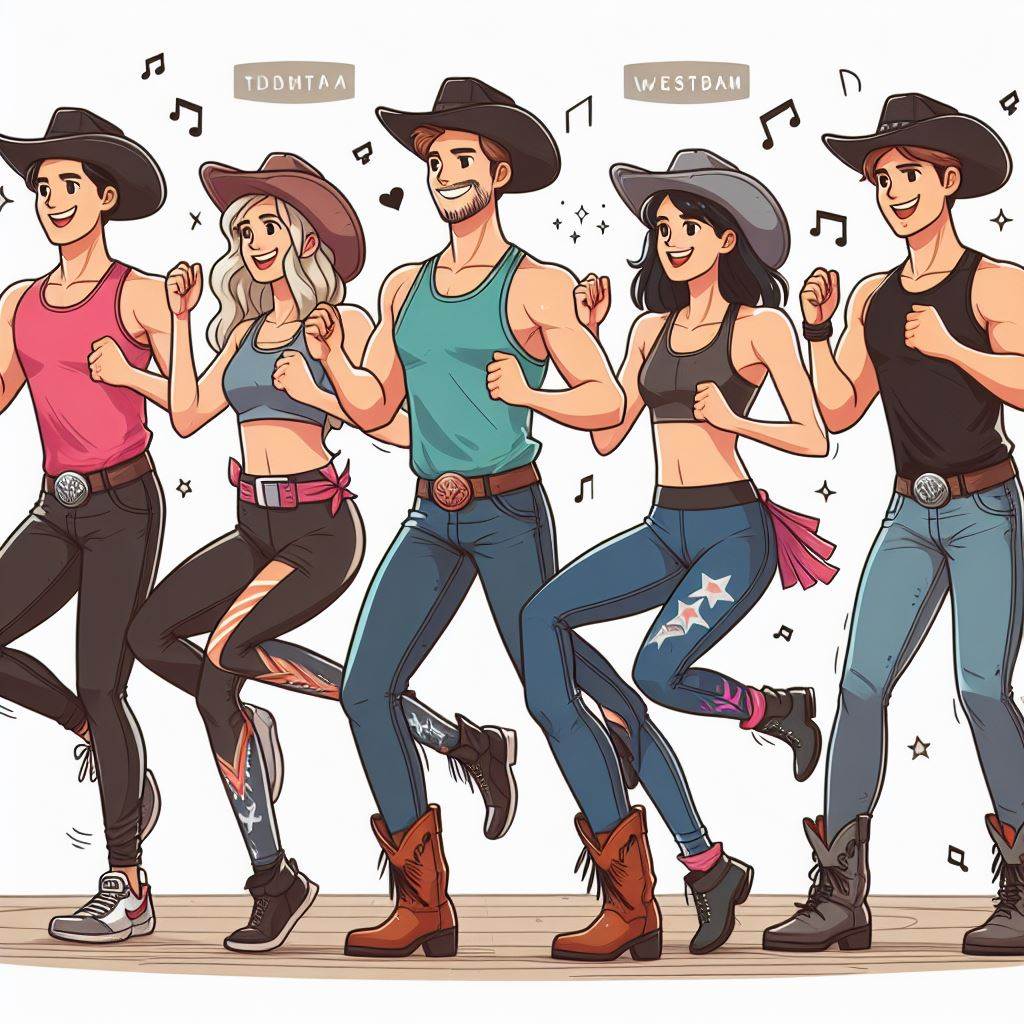
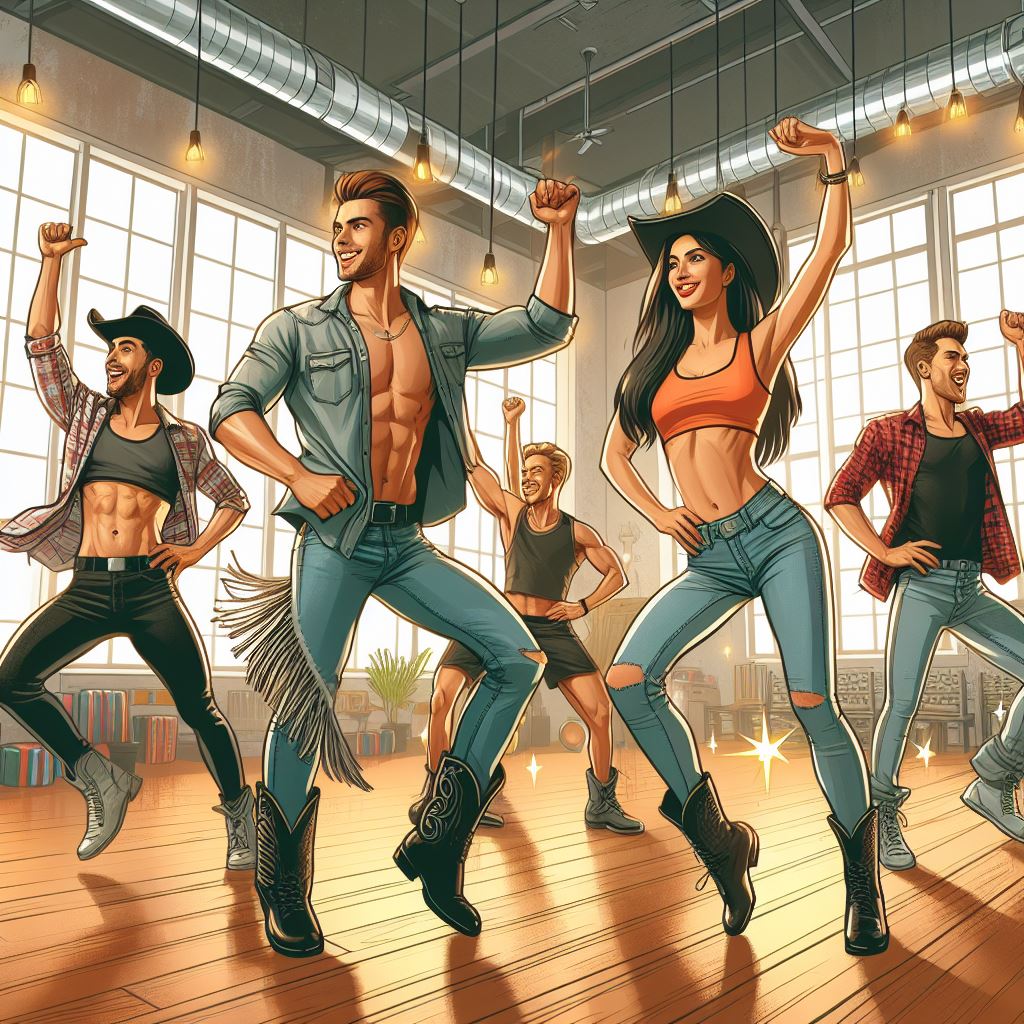
- Grapevine: Step side, cross behind, step side, touch.
- Jazz Box: Step forward, cross, step back, step side.
- Kick Ball Change: Kick, step on ball of foot, step on other foot.
- Pivot Turn: Step forward, pivot 180 degrees.
- Shuffle: Step, together, step.
- Rock Step: Step forward, rock back.
- Coaster Step: Step back, together, step forward.
- Weave: Step side, cross behind, step side, cross in front.
- Heel Dig: Tap heel forward.
- Toe Touch: Tap toe to the side.
- Monterey Turn: Touch side, turn 180 degrees, step together.
- Charleston: Step forward, kick, step back, touch.
- Scuff: Brush heel forward.
- Stomp: Step down hard without weight change.
- Hitch: Lift knee up.
- Lock Step: Step forward, lock other foot behind, step forward.
- Mambo Step: Rock forward, recover, step together.
- Sailor Step: Cross behind, step side, step side.
- Heel Hook: Tap heel forward, hook across shin.
- Swivel: Twist heels or toes in the same direction.
- Cross Shuffle: Cross, step side, cross.
- Side Rock: Rock to the side, recover.
- Back Rock: Rock back, recover.
- Forward Rock: Rock forward, recover.
- Hip Bumps: Bump hips to the side.
- Step Turn: Step forward, turn 90 degrees.
- Heel Switches: Tap heel forward, switch feet.
- Toe Strut: Step on toe, drop heel.
- Heel Strut: Step on heel, drop toe.
- Jazz Hands: Wave hands in the air.
- Box Step: Step forward, step side, step back, step side.
- Knee Pop: Lift knee up and down.
- Heel Grind: Twist heel into the floor.
- Applejack: Twist one heel and opposite toe out.
- Boogie Walk: Walk forward with a hip roll.
- Camel Walk: Step forward, slide other foot up.
- Chug: Small hop forward or backward.
- Cuban Hips: Sway hips side to side.
- Drag: Slide one foot to meet the other.
- Flick: Kick foot up behind.
- Gallop: Quick step together, step.
- Grapevine with Turn: Grapevine with a turn at the end.
- Heel Jack: Step back, tap heel forward.
- Heel Split: Spread heels apart and together.
- Hip Roll: Circle hips around.
- Jazz Split: Slide one foot forward, bend knees.
- Jump: Both feet leave the ground.
- Kick Ball Cross: Kick, step on ball of foot, cross other foot.
- Knee Hitch: Lift knee up and down.
- Lindy: Side shuffle with a rock step.
- Lock: Cross one foot behind the other.
- Moonwalk: Slide one foot back while lifting the other.
- Out Out In In: Step out, out, in, in.
- Paddle Turn: Step forward, turn with small steps.
- Point: Extend toe to the side.
- Push: Step forward, push back.
- Rocking Chair: Rock forward, back, forward, back.
- Rolling Vine: Grapevine with a full turn.
- Samba Step: Step forward, side, together.
- Scissor Step: Step side, together, cross.
- Shimmy: Shake shoulders.
- Side Shuffle: Step side, together, side.
- Slide: Step side, drag other foot.
- Snake: Wave body side to side.
- Step Clap: Step forward, clap hands.
- Step Lock: Step forward, lock other foot behind.
- Step Pivot: Step forward, pivot 180 degrees.
- Stomp Up: Stomp foot without weight change.
- Sugarfoot: Tap toe, heel, toe.
- Swivel Walk: Walk with twisting feet.
- Syncopated Steps: Quick steps between beats.
- Tag: Extra steps added to the dance.
- Tap: Touch toe or heel to the floor.
- Toe Fan: Spread toes apart and together.
- Triple Step: Three steps in place.
- Turn: Rotate body.
- Twist: Twist feet or body.
- Vine: Step side, cross behind, step side.
- Walk: Step forward or backward.
- Weave: Step side, cross behind, step side, cross in front.
- Whip: Quick turn or spin.
- Windmill: Circle arms around.
- Zigzag: Step side, cross, step side, cross.
- Zumba Step: Step forward, side, back.
- Applejack: Twist one heel and opposite toe out.
- Boogie Walk: Walk forward with a hip roll.
- Camel Walk: Step forward, slide other foot up.
- Chug: Small hop forward or backward.
- Cuban Hips: Sway hips side to side.
- Drag: Slide one foot to meet the other.
- Flick: Kick foot up behind.
- Gallop: Quick step together, step.
- Grapevine with Turn: Grapevine with a turn at the end.
- Heel Jack: Step back, tap heel forward.
- Heel Split: Spread heels apart and together.
- Hip Roll: Circle hips around.
- Jazz Split: Slide one foot forward, bend knees.
- Jump: Both feet leave the ground.
- Kick Ball Cross: Kick, step on ball of foot, cross other foot.
- Knee Hitch: Lift knee up and down.
- Ball Change: A quick rock step using the ball of the foot, often counted as “&”.
- Brush: Moving the free leg forward or backward, letting the ball of the foot make contact with the floor without a weight change.
- Cha Cha: Three steps done in any direction, taking only two beats of music.
- Grapevine: A side step, cross behind, step side, usually finished with a touch, stomp, kick, or hitch.
- Pivot: A turn that travels from one point to another, often called a “Traveling Pivot”.
- Kick Ball Change: A kick followed by a ball change, usually counted as 1&2 or 3&4.
- Hitch: Drawing the knee of the free leg up with weight on the other foot.
- Jazz Box: A four-count move, stepping forward, crossing, stepping back, and then stepping back to the side. These are just a few examples. Line dancing has a rich vocabulary that helps dancers communicate and perform various steps and patterns,
Walls in line dance: One Wall is a dance which starts and ends with the routine facing front and not turning. Two Wall is a dance which ends facing the opposite wall, where it is repeated so it ends again in the original position. Three Wall dance turns 3/4. Four Wall dance. After the dance has been performed once, it will turn either to the right of left by one quarter. 1/4 turn to face the next wall, 1/2 turn to face opposite wall, 3/4 turn to face third wall, one full turn to face the same direction as start.
Why not check out our SWING DANCE CLASSES, Latin Solo Ballroom, Line Dance, Zumba, Wedding, Private, Disco, classes too?
